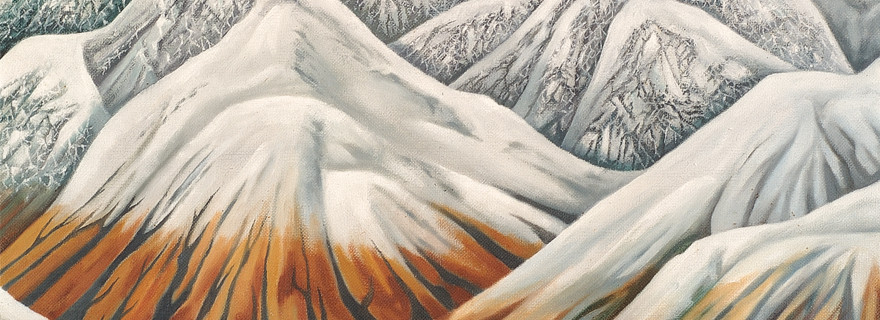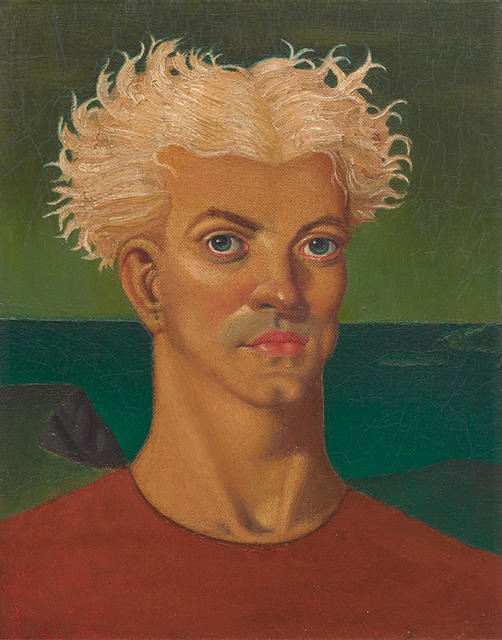B.
Light work
Behind the scenes
With Leo Bensemann: A Fantastic Art Venture set to open at the Gallery in February, I've been working on Bensemann's St Olaf to get it ready for exhibition.
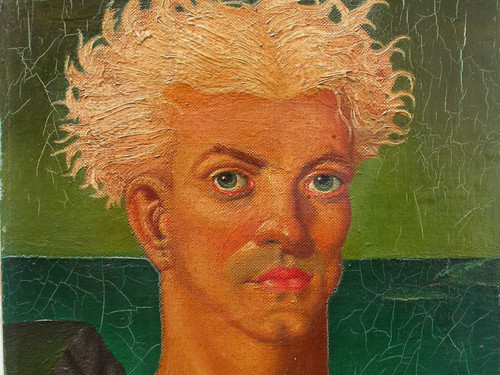
A detail of St Olaf before treatment.
Leo Bensemann St Olaf (detail) c.1937. Oil on canvas on board. Collection of Christchurch Art Gallery Te Puna o Waiwhetū, Lawrence Baigent / Robert Erwin Bequest 2003. Reproduced with permission
Before any conservation treatment could begin, the painting was first examined to determine its structure and condition. Sometimes paintings display characteristic damage or evidence of previous treatments that can provide important clues to better understanding the painting's history.
An initial examination of the paint film with ultraviolet light is a very important part of the pre-treatment documentation process. Constant ultraviolet light examination during the conservation treatment is a part of whole conservation treatment.
St Olaf had numerous cracks covering the whole background – they appeared like a net of fine, narrow irregular lines in both the daylight and UV light images. Through these cracks another light paint film was visible.
Under ultraviolet light, it became apparent that the whole painting was covered in a very thick layer of dirt and dust. Although almost invisible in daylight, under ultraviolet light this layer appeared as a dark, uneven film obscuring all image details. In this image the solvent tests undertaken to establish the most suitable mixture for removing this dirt from the paint surface are clearly visible as square patches along the painting's left edge.
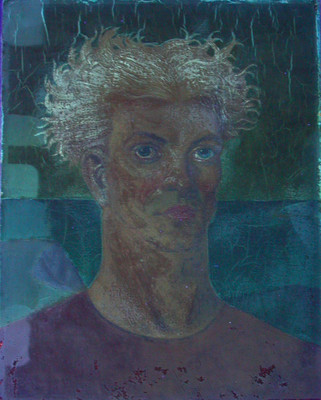
Also noticeable was the general fluorescence of an old varnish – after dirt and dust removal this layer appeared as a very light blue film under UV light. Previously very clear, it had changed to a hard yellow film when constantly exposed to daylight over a long period. The careful removal of this varnish layer revealed the true colour intensity of the paints used by the artist. Under UV light the original paint film appears as a darkish very clear surface.
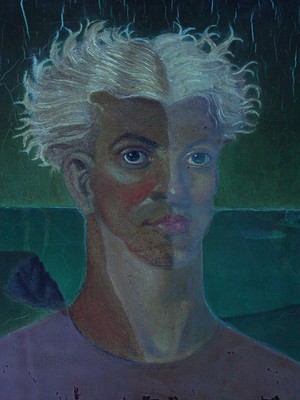
The final stage of conservation treatment was to re-varnish the painting and inpaint the losses. In this case the inpainting is concentrated in the areas exposed by the cracks. By varnishing the painting first we are able to accurately mach the colour of the new inpainting and original paint. Previously very visible cracks were filled with new paint – the cracks are still present on the painting but become less visible and do not dominate the portrait. The new inpainting appears under ultraviolet light as a very dark net of fine irregular lines.
After this the painting was returned to its frame and made ready for exhibition, in this case as part of Leo Bensemann: A Fantastic Art Venture.
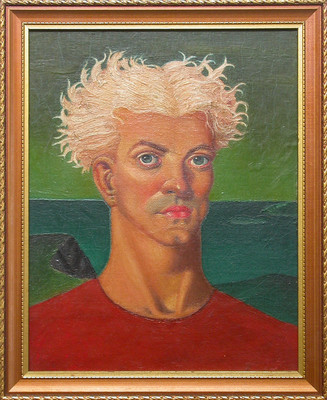
Leo Bensemann St Olaf c.1937. Oil on canvas on board. Collection of Christchurch Art Gallery Te Puna o Waiwhetū, Lawrence Baigent / Robert Erwin Bequest 2003. Reproduced with permission

